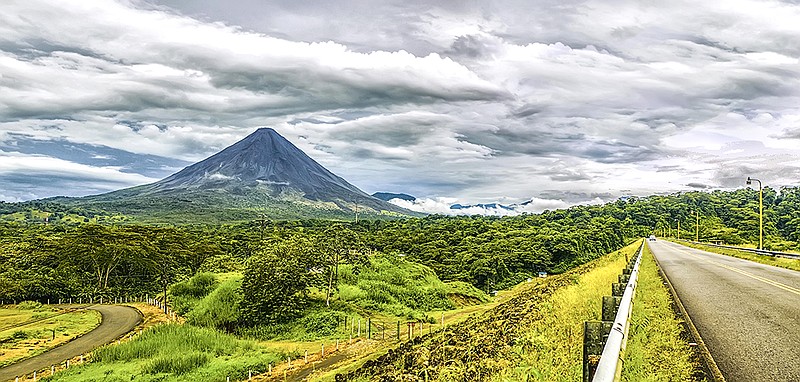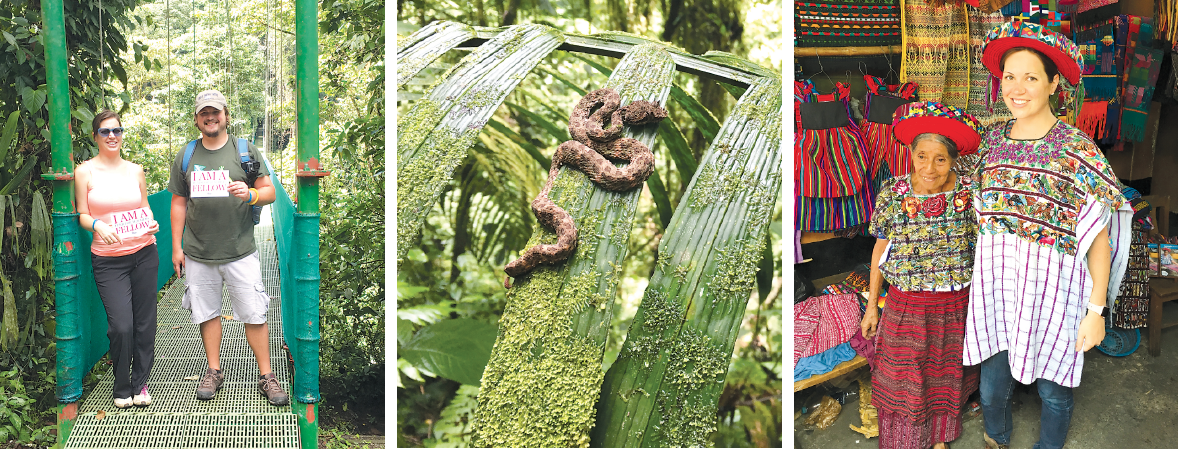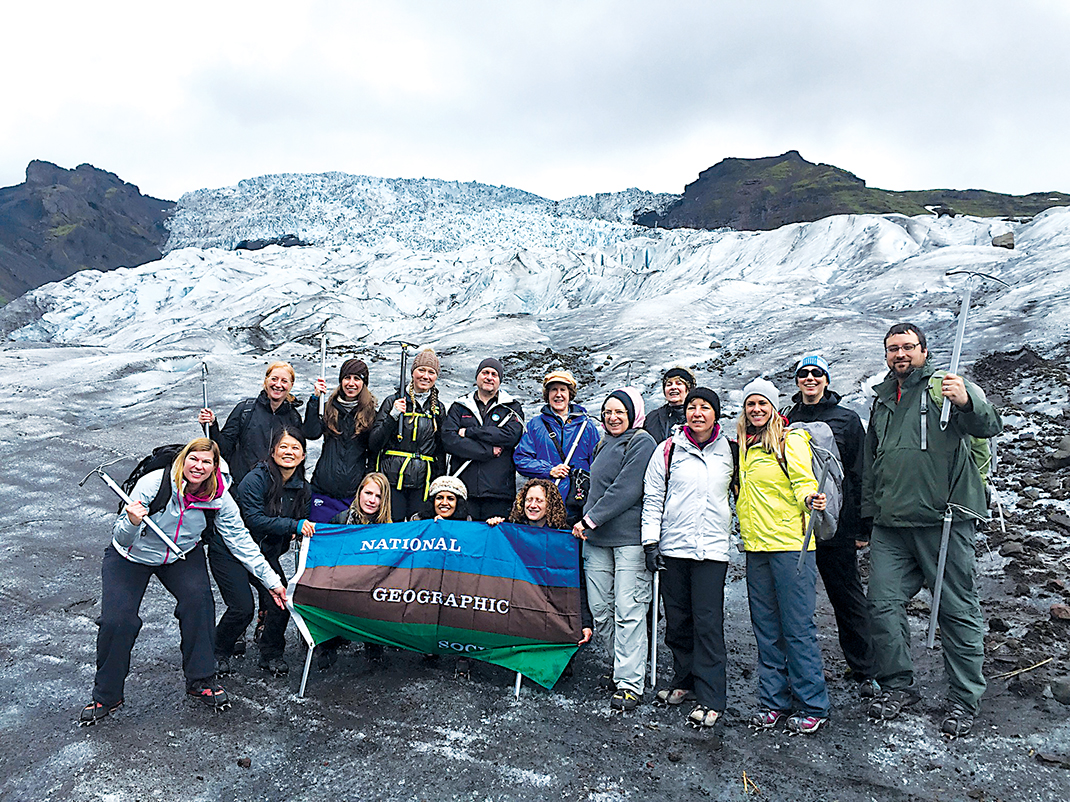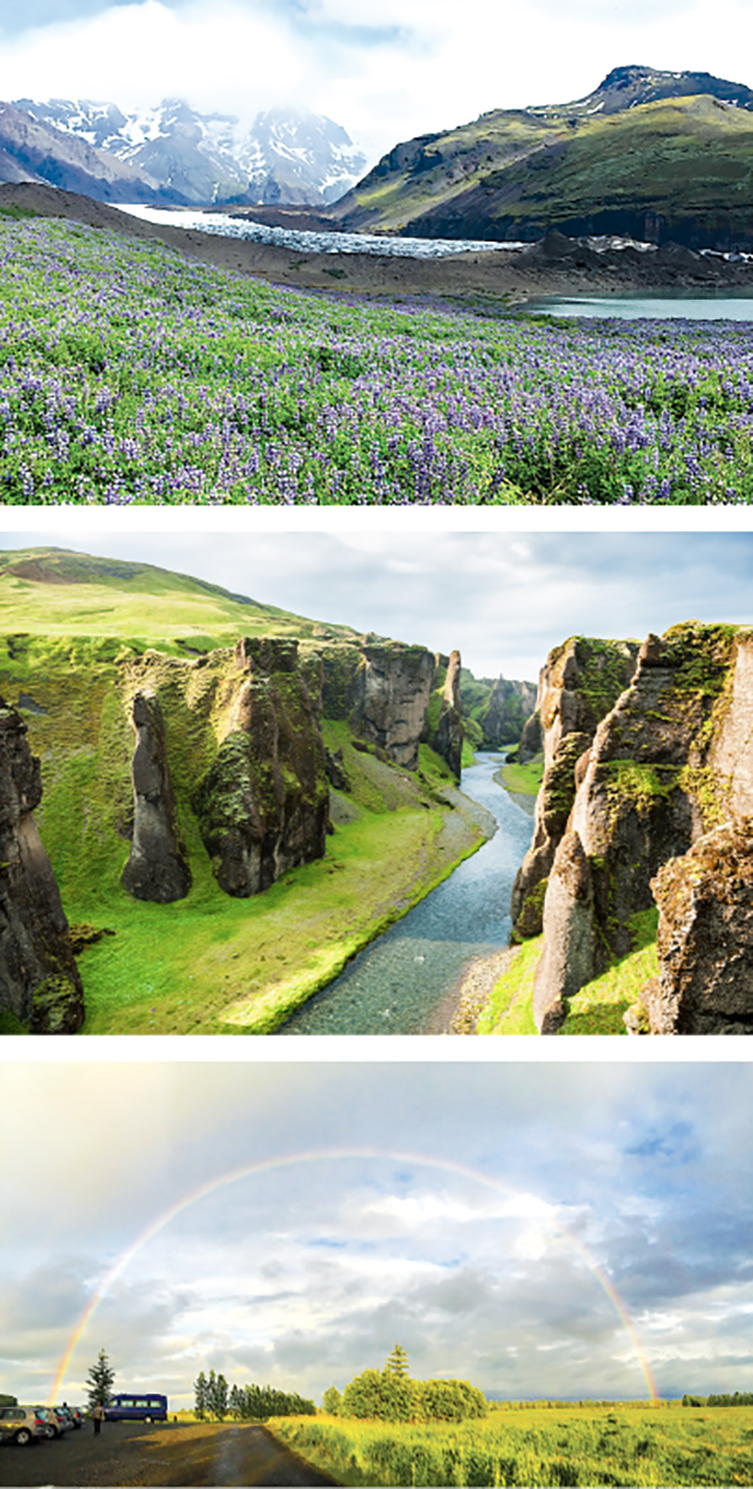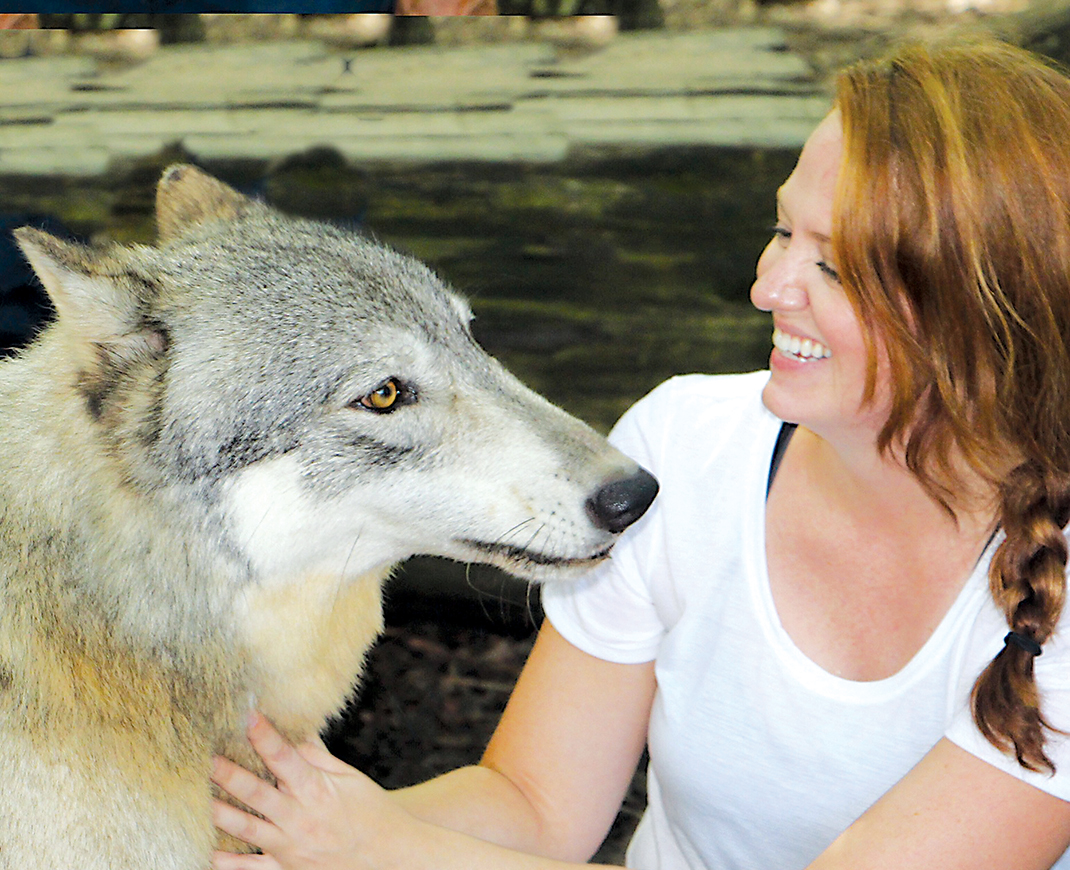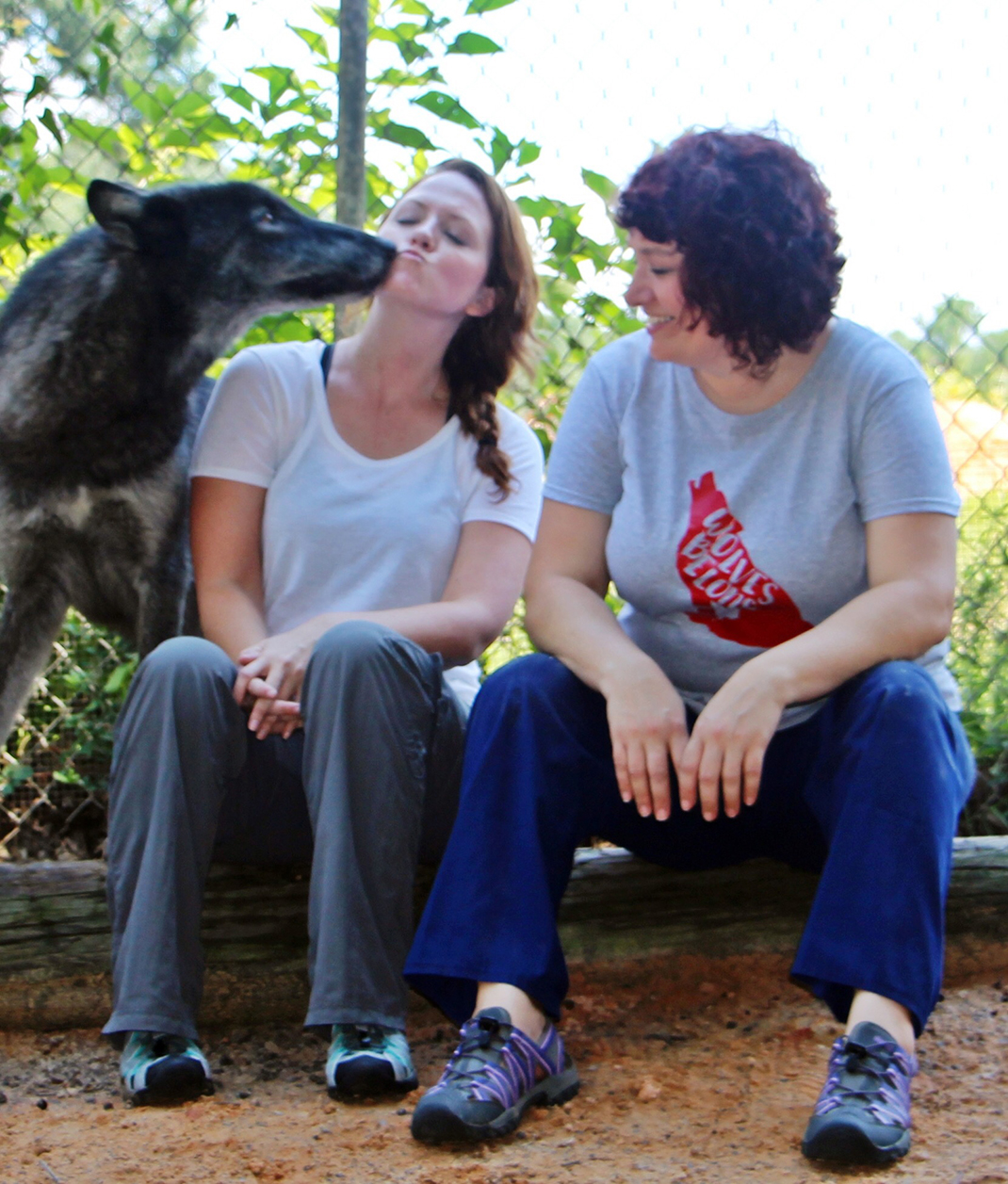Real life experiences.
That's what the Public Education Foundation, or PEF, aims to provide teachers through its Fund for Teachers grants so they can better educate their students.
Last year, 18 Hamilton County educators were awarded grants of either $5,000 or $10,000 for educational trips around the globe so they could share the experiences they had and the things they learned with their students. And while they weren't vacations, they truly were adventures, whether that meant exploring where fairy tales were birthed or bridging the gap with language acquisition strategies.
Scaling a glacier in Iceland, howling with red wolves in North Carolina and paddling through mangrove forests in Costa Rica were some of the more adventurous journeys various grantees got to experience so they could tell their tales in the classroom.
We thought their adventures were worth sharing outside of the classroom, too.
Biology and cultural understanding in the rainforest
Names: Jessica Hubbuch and Sean Brown
Grant Purpose: To study environmental and cultural diversity in Costa Rica, Guatemala and Belize
Length of trip: Three weeks
Grant Amount: $10,000
When Howard School science teacher Jessica Hubbuch returned from her three-week trip to Costa Rica, Guatemala and Belize, she expected her students would be eager to hear about her travels.
However, she was surprised to find what excited them the most.
Hubbuch's classes have several ESL students who are originally from Guatemala. On the first day of chemistry class for the new 2016 fall semester, her Guatemalan students immediately noticed her shoes, which Hubbuch had purchased while visiting their home country. They also noticed the small Guatemalan flag on her handbag.
For Hubbuch, these had simply been souvenirs from her trip with fellow Howard science teacher Sean Brown. However, these objects quickly blossomed into points of connection between her and her students.
"It definitely helped some of the students to open up at a faster pace," Hubbuch says.
Hubbuch and Brown's three-week excursion was designed to help them improve their curriculum and create a better lesson plan in their field: environmental science; though Hubbuch transitioned to teaching chemistry not long after they returned.
Their trip involved one week in Costa Rica to study biodiversity and rainforests, one week in Guatemala to study the nation's culture and language, and several days in Belize to study aquatic life.
This wasn't about creating a PowerPoint presentation, though. For Hubbuch and Brown, it was about being able to personally relay their own experiences back to their students to help enliven their lessons.
"Student engagement is highest when you can make what you're teaching interesting," Hubbuch says. "This trip helped us take it to the next level."
One of the tours she and Brown got to do in Costa Rica was a night tour of a mangrove forest by canoe. They slowly paddled through water illuminated by bioluminescent algae. All around them, snakes dangled from the forest branches. The guide talked about the delicate ecology of the mangroves and how they can survive despite their roots being submerged underwater.
"I don't think I'll ever get to see anything like that again," Hubbuch says.
When she first showed her students the photos, they couldn't contain their questions: What made the water glow? Were the snakes dangerous? What other animals were there?
Her students also clamored to hear all about her experience guarding a nesting sea turtle in Guatemala.
One evening, she and Brown drove to a remote village on the Caribbean shore to eat and sleep for the night. They noticed villagers going out to the beach in groups of four and standing there for hours. They were told the villagers were going out to protect a mother sea turtle from poachers or predators. Hubbuch and Brown asked if they could help.
"We stood out in the rain for three hours straight until the turtle deposited her clutch of eggs," Hubbuch says. "She was huge - at least the size of a child's sandbox. There weren't any lights or cameras allowed. We just got to come up and watch what was happening."
Sea turtles were already a popular subject in Hubbuch's classroom lessons, but relaying her own personal experience skyrocketed the students' engagement, she says.
Perhaps the most notable addition to Brown's and Hubbuch's lessons came as a result of their time in a fabric co-op in Guatemala. The pair spent several days working alongside women in a village and learning how to dye and weave wool to make blankets and clothing. During that time, they integrated as much as possible into the culture and tried to connect with locals.
The Howard School does a multicultural day ever year, and Hubbuch says she's tried to use the opportunity to personally connect with her Guatemalan students. Seeing firsthand where many of her students come from provided her with a more genuine understanding of their culture.
"As a teacher, you try to get past the surface of your students and understand who they are," Hubbuch says. "After the trip, I realized I had some naivete [in my approach] that I had to confront head-on."
Her trip showed her what it was like to be a stranger in a foreign land - when something as seemingly insignificant as a pair of shoes can bridge the cultural chasm between where you've been and where you are.
"Knowing how that feels won't ever leave me," Hubbuch says.
Now, she's incorporating Spanish into her lessons a bit more, and has gotten some of her Guatemalan students to open up about themselves by using her trip as the key. After all, her students were always what the trip was about.
Demystifying Iceland while making science cool
Name: Cara Stiles
Grant purpose: To study Iceland to provide real world lessons for her science class
Length of trip: 10 days
Grant amount: $5,000
Seeing black sand is one thing. Getting to feel it is truly eye-opening.
Iceland's famous black sand beaches are a result of volcanic ash settling. Whereas typical white silica sand sticks to you when you press your hand into it, black sand doesn't.
Sale Creek Middle School science teacher Cara Stiles had seen the sand in pictures - she'd done plenty of reading about the island and loved photography of the more scenic locales.
"Sciences you can study in Iceland cover about half the year of my curriculum," she says. "The Northern lights, volcanoes, the atmosphere, tectonic plates, the rock cycle, climate change - it's all there."
Over the summer, Stiles got the chance to experience the sand for herself, and she made sure her students got the opportunity to, too. Making her lessons tangible was a major goal for her trip. Hands-on learning in the classroom is always a bit more fun, Stiles says.
In addition to sand samples, she brought back hours of videos she'd taken from her various guided trips. She's managed to incorporate videos on basalt columns forming as active lava met the icy ocean, Icelandic greenhouses where they grow Dutch tomatoes, the dozens of waterfalls in Iceland, and more.
"The biggest goal of the trip was just to get the kids engaged and excited to learn, especially about things that could be boring," Stiles says. "When kids think about geology, they could think, 'Who wants to look at rocks?' But then you show them what happens when lava flows into the ocean and all these other geological wonders, and now they'll remember it."
Similarly, plate tectonics isn't the easiest subject to make exciting. However, her photos of the only place on Earth where two tectonic plates can be seen scraping against one another helps enliven the lesson. Likewise, geothermal energy can be a bit dry, but stories about how Reykjavik doesn't need snowplows because they run geothermally heated water under their roads makes it interesting, even for students determined to be bored.The excursion that had the biggest impact on Stiles herself was a guided hike up to and onto a glacier in the northern part of the island. Along the way, her guide pointed to the rocks which littered the path. As the glacier receded, it left those rocks behind, the guide explained.
When Stiles reached the glacier, it was immediately clear from the occasional drips that it was melting. Her guide, an Icelandic native, pointed out where the glacier had been two decades prior, land that was now strewn with rocks and boulders left behind by the glacier's retreat.
Information about climate change can often be complicated by politicized discussion. However, physically standing next to the glacier and seeing where it had been made the discussion very real, Stiles says.
"When you get connected to the people and the culture it's affecting, it starts to matter personally to you, too," she says. After all, tourism is a key part of the Icelandic economy, and glacial melt means less glaciers, which means fewer tourists. "Here's an actual place with actual people. The trip definitely made me much more environmentally aware."
The trip wasn't all science, though. Stiles' time spent in the Icelandic capital gave her a taste of the country's food, culture and an impromptu church service at Iceland's largest cathedral, Hallgrímskirkja.
"I walked in there and managed to walk in the middle of a church service," Stiles says. "Everyone turned and looked at me. I looked exactly like a backpacker, and they were all dressed in church wear! I think it was a special service or something, so then I had to sit down and stay. I couldn't just leave after an entrance like that."
Stiles has dozens of stories from her trip. Some are better than others, but if any of them can help spur her students' interest in the science of the island, she's more than happy to tell them.
De-demonizing the big bad wolf
Name: Stevie Davis and Veronica McCuiston
Grant purpose: To study the remaining wild red wolf population and understand their plight of near-extinction.
Length: Several trips over the course of two months
Grant Amount: $10,000
Stevie Davis and Veronica McCuiston had been howling for hours.Not figuratively. Literally, howling like wolves.
The pair was in Alligator River, North Carolina, the last known location red wolves are found in the wild, and they were trying to get the wolves to howl back. Still, the chances seemed slim. There are only 40 to 60 red wolves estimated to be left in the wild, and they could have been anywhere on the hundreds of acres of wild property.
"We were lucky no one was around, because I know we looked like idiots," Davis says. "We must have been howling for around three hours. My throat was raw after a few hours."
Not a peep came back. It was a warm and muggy summer day close to the Outer Banks, and the duo surmised it might be too hot for the wolves to pay attention.
"That, or we were just terrible howlers," says Davis, who has had some howling practice as a third-grade teacher at East Ridge Elementary. McCuiston is a second-grade teacher at North Hamilton County Elementary.
As dusk fell, Davis pulled the Jeep down one more of the dirt roads that cross the preserve. Most of the roads they'd gone down had names, but this one had no signage, no indication of where it was going or what would be at the end.
They were immediately confronted with a black bear ambling across the roadway. After a few minutes, the road came to a dead-end and Davis went to turn her vehicle around. As she did, her headlights swept across a wide field and revealed over a dozen bears, happily grazing. Struck by the moment, Davis stuck her head out of the sunroof and let cry the loudest howl she could muster.
Lo and behold, three red wolves popped their heads out of the grass and trotted toward the treeline, away from the Jeep. Then, the animals stopped and turned to look at Davis and McCuiston once more. Davis howled again.
"They didn't like that, and they took off with their tails between their legs, howling with us," Davis says. "It's the coolest thing that's ever happened to me."
Kim Wheeler, the director of the reserve, later told the women she had seen only one red wolf in over a decade of working there.
After returning from their trip, Davis and McCuiston worked together to study the red wolf population and wolves in general for their PEF grant. They didn't just want to enrich their own classrooms, though, so they created a lesson plan that any Hamilton County teacher could use, regardless of grade level.
"These are such amazing animals, and they're nearly extinct," Davis says. "And there's such a lack of knowledge about them. We wanted to work to fix that."
In their studies, they also traveled to Alabama and Florida where they visited refuges for gray wolves and other wild animals that had been rescued from captivity. Many people believe red wolves are not actually a unique species; that they are just hybrids of gray wolves and coyotes, Davis says, but the biologists they met with dispelled that rumor.
That was one of the major concepts they wanted to bring home to their students: Do your own research rather than just believing rumors.
Because red wolves and coyotes look similar, red wolves have historically been mistaken by hunters as coyotes, which have extremely healthy population numbers and are widely regarded as pests.
"Since red wolves bully coyotes, though, when red wolf populations are down, it just means coyotes can flourish," Davis says.
That wolves aren't bad was another of the major points they wanted to impart to their students.
"They're all taught the story of the Big Bad Wolf from an early age, and we asked ourselves, how can we show them that this isn't the case?" Davis says.
The pair came up with lessons and activities to highlight the similarities between wolves and dogs. One of the biggest hits with their students was a display of real skulls from a gray wolf, a red wolf, a coyote and a German shepherd. Davis says it was the most popular biology lesson she's ever given.
"We just gave them the facts - here's what's happening, here's how involved parties feel - and we let them form their own opinions," Davis says. "They don't get the heavier science of it, but we don't give them enough credit. If you give these kids the facts, they'll make good, informed decisions."
Through these lessons, Davis hopes her students can better understand how nature works and why it's worth protecting.
